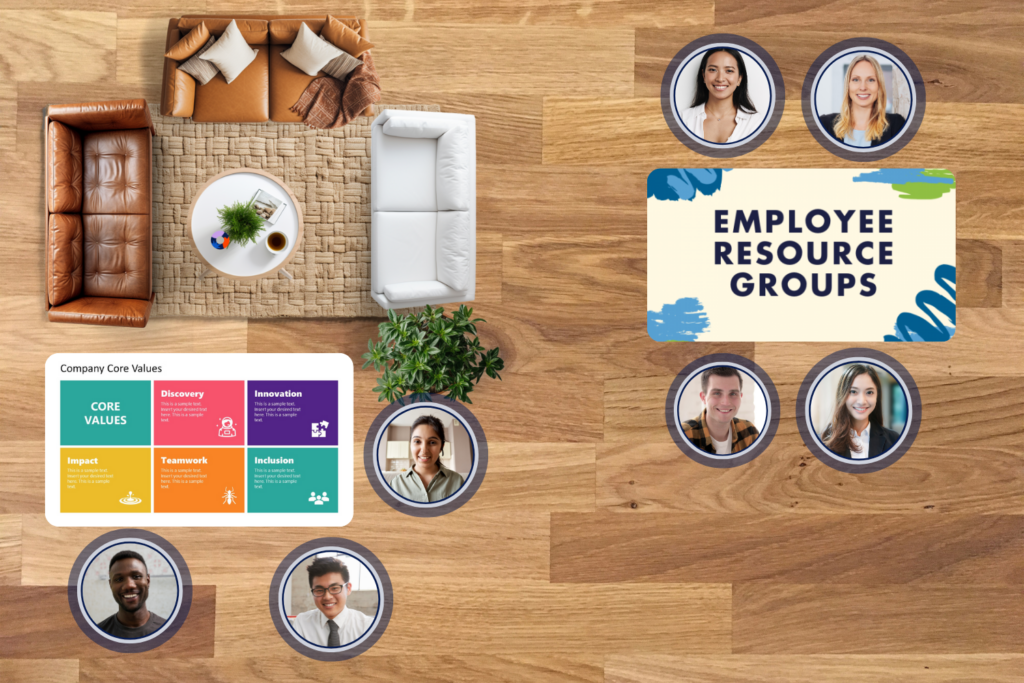Gone are the days when meetings were synonymous with boardrooms, conference spaces, and casual coffee shop discussions. Today, as technology breaks down barriers like distance and time zones, our concept of collaboration has dramatically evolved. While the present state of remote collaboration is a testament to rapid technological advancements and societal shifts, its future brims with untapped potential. Explore this post as we delve into the innovations, trends, and insights that are defining the next chapter of digital collaboration.

Remote Collaboration: A Paradigm Shift
It’s undeniable that remote work and collaboration have come a long way. Previously, rare and confined to specific roles or industries, but Today, remote work is increasingly the norm, with many employees opting to work remotely part or full time. The pandemic acted as a catalyst for this significant shift – emptying offices nationwide, turning bedrooms into workspaces, and disrupting what had been traditional office culture. As we fast-forward into a progressively digitized future, the significance of remote collaboration continues to skyrocket, despite the initial resistance.

The Speed of Technological Transformation
Over the past two decades, we’ve seen technology accelerate at a breathtaking pace. Computers have become 10 times faster than they were 20 years ago, and 5G networks are up to 200 times faster than their 4G counterparts. To put this in perspective, the iPhone 13 Pro is 50 times more powerful than the Blackberry 880, once considered a cutting-edge device.
Technology has been at the heart of the remote work evolution. It has played a pivotal role in how we collaborate remotely, how we share ideas, and how we maintain the social fabric of the workplace. We’ve moved from simple conference calls to immersive, engaging virtual meetings. This shift reflects our enduring need to connect and share ideas. As this technological momentum continues, it naturally paves the way for groundbreaking trends in how we approach and redefine remote collaboration.
Emerging Trends in Remote Collaboration
To stay ahead in the evolving workspace, it’s essential to keep abreast of emerging trends in remote collaboration. Some of these trends include:
Advanced Virtual Environments:
With the rise of VR and AR technologies, virtual meetings will become more immersive and collaborative. These technologies can make remote work feel more like being in an actual office environment.
AI and Automation:
Artificial Intelligence (AI) and automation technologies are becoming increasingly sophisticated, and they will play an even larger role in managing and streamlining collaboration in the future.
Asynchronous Collaboration:
As remote work spans across different time zones, the importance of asynchronous communication and collaboration will rise. This means that work won’t have to be conducted at the same time but can be distributed over time.
Security and Privacy:
As collaboration moves more into the digital realm, the importance of data security and privacy will increase significantly, leading to advancements in security technologies and stricter data regulations.
Personalized Workspaces:
Technology will continue to adapt to individual needs, allowing for greater personalization of remote workspaces, from digital tools to physical equipment.
Work-Life Integration:
The line between work and personal life will continue to blur as people adjust their schedules for optimal work-life balance. This will result in more flexible working hours and an increased emphasis on employee wellbeing.
Diversity and Inclusion:
Remote work can connect people from different cultures and backgrounds, leading to more diverse and inclusive work environments. This global perspective can lead to more innovative solutions.
Upskilling and Reskilling:
As technology advances and the nature of work changes, continuous learning will become a necessity. Companies will need to invest in training and development to keep their teams up-to-date.
Sustainability:
Remote work can lead to decreased commuting and lower carbon emissions, and it’s likely that companies will use this aspect to contribute to their sustainability goals.
Hybrid Models:
While remote work has many advantages, face-to-face interaction is also valuable. We can expect hybrid models to become popular, with some work conducted remotely and some in person.

Meeting the Demand for Virtual Collaboration Technology
The exciting part is that this technological transformation is not just driven by tech companies—it’s driven by the people using the technology. Today, customers are not passive recipients of tech advances; they’re active participants, shaping the future of collaboration tools.
Customers crave technologies that facilitate better connections, are easier to set up and use, offer richer experiences, and deliver higher return on investment (ROI). The shift to remote work and virtual collaboration amplified this demand. After all, when a meeting room becomes a browser tab, expectations change dramatically.
Businesses are not just looking for a communication tool. They need a platform that can mimic, and even surpass, the effectiveness and richness of physical meetings. This includes features like break-out rooms, virtual hand raising, advanced scheduling options, and integration with productivity tools. They’re also seeking platforms that can deliver robust analytics to assess participation, engagement, and overall meeting effectiveness.
Scoot: Revolutionizing Online Communication
At Scoot, we’re at the forefront of this transformation, offering a dynamic virtual meeting platform designed for the modern workplace. Scoot transforms every virtual meeting into an immersive and engaging experience, mirroring the fluidity and spontaneity of in-person interactions.
Participants can move naturally through virtual spaces, fostering authentic connections and breaking the monotony of traditional remote meetings. With our patented Social Presence® technology, we prioritize human connection, enabling better collaboration.
Scoot also allows customization of meeting experiences, from room aesthetics to premium music choices, enabling you to elevate every meeting while maintaining your brand identity.

Embracing the Future of Remote Collaboration
Successful navigation of this shift requires adaptation and a willingness to innovate. Stay adaptable. Get ahead on emerging trends, and invest in tools and technologies that enhance remote collaboration. Connection is at the heart of effective collaboration, and collaboration is the key to productivity. Remember, in this ever-evolving landscape, technology is just the enabler; it’s the human touch that defines collaboration.
Strive to foster this connection, no matter where your team is located, and you’ll be well-equipped to navigate the future of remote collaboration. The future isn’t just an occurrence – it’s a creation. Let’s get ready to sculpt a future that benefits us all.
Conclusion
The future of remote collaboration is not just about meetings—it’s about creating shared experiences and building strong, effective relationships, regardless of distance. It’s about not just replicating the physical meeting room but enhancing it with the power of technology. As the landscape continues to evolve, platforms like Scoot are at the forefront, ready to meet and surpass these evolving needs.
The evolution of collaboration tools has already transformed how we work, but we’re only scratching the surface. As we look ahead, technological advancements promise to further redefine how we connect, collaborate, and create. Now is the perfect time to experience this revolution firsthand.
Ready to transform your remote collaborations? Try out Scoot, our innovative virtual meeting platform, and be a pioneer in shaping the next chapter of digital interaction. Experience the future, today.
